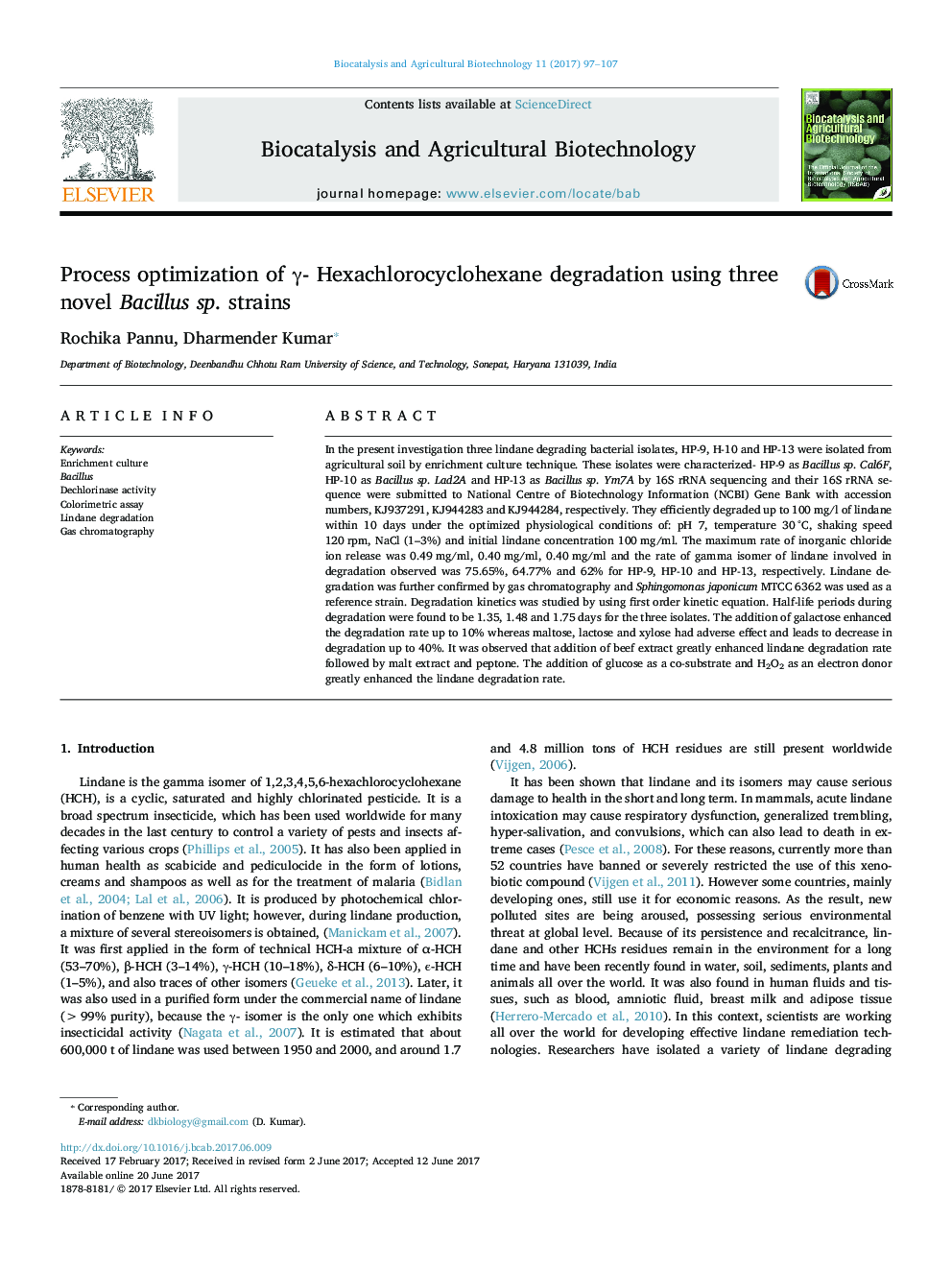| Article ID | Journal | Published Year | Pages | File Type |
|---|---|---|---|---|
| 5520545 | Biocatalysis and Agricultural Biotechnology | 2017 | 11 Pages |
In the present investigation three lindane degrading bacterial isolates, HP-9, H-10 and HP-13 were isolated from agricultural soil by enrichment culture technique. These isolates were characterized- HP-9 as Bacillus sp. Cal6F, HP-10 as Bacillus sp. Lad2A and HP-13 as Bacillus sp. Ym7A by 16S rRNA sequencing and their 16S rRNA sequence were submitted to National Centre of Biotechnology Information (NCBI) Gene Bank with accession numbers, KJ937291, KJ944283 and KJ944284, respectively. They efficiently degraded up to 100 mg/l of lindane within 10 days under the optimized physiological conditions of: pH 7, temperature 30 °C, shaking speed 120 rpm, NaCl (1-3%) and initial lindane concentration 100 mg/ml. The maximum rate of inorganic chloride ion release was 0.49 mg/ml, 0.40 mg/ml, 0.40 mg/ml and the rate of gamma isomer of lindane involved in degradation observed was 75.65%, 64.77% and 62% for HP-9, HP-10 and HP-13, respectively. Lindane degradation was further confirmed by gas chromatography and Sphingomonas japonicum MTCC 6362 was used as a reference strain. Degradation kinetics was studied by using first order kinetic equation. Half-life periods during degradation were found to be 1.35, 1.48 and 1.75 days for the three isolates. The addition of galactose enhanced the degradation rate up to 10% whereas maltose, lactose and xylose had adverse effect and leads to decrease in degradation up to 40%. It was observed that addition of beef extract greatly enhanced lindane degradation rate followed by malt extract and peptone. The addition of glucose as a co-substrate and H2O2 as an electron donor greatly enhanced the lindane degradation rate.
